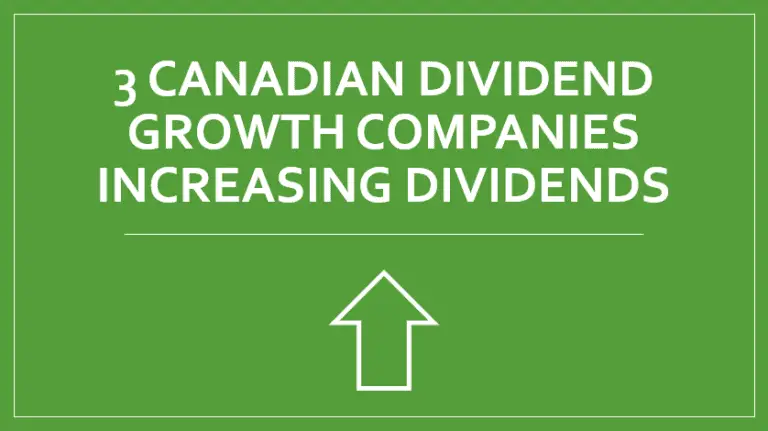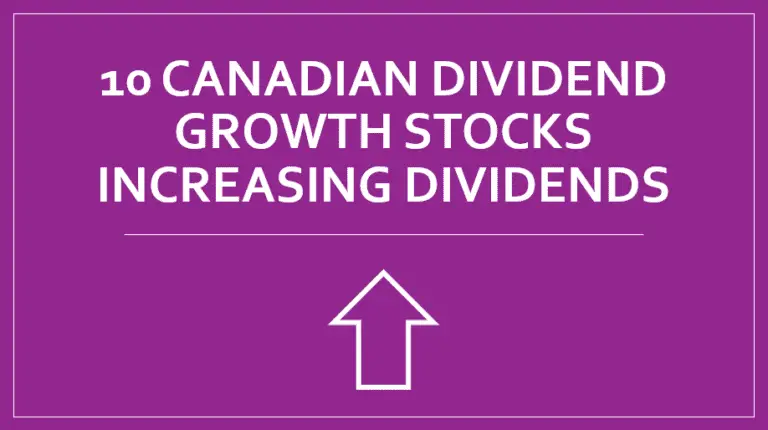Dividend Growth Investing & Retirement is supported by its readers through donations and affiliate links. If you purchase through a link on my site, I may earn a commission. Thanks! Learn more.

In this two-part series, I am going to go over 6 factors that impact dividend growth and how you can estimate the future dividend growth of a company.
In this first part, I’ll go over six different factors that affect dividend growth.
In the second part, I’ll go over how to use these influences to estimate future dividend growth with some examples.
6 Factors That Impact Dividend Growth
- Earnings Growth
If a company is not making money or unable to grow earnings, then it is unlikely they will be able to continue future dividend increases for long. This is a fairly obvious influence, but an important one. If the company isn’t growing don’t expect sustained dividend growth.
- Payout Ratio
The payout ratio tells you what percentage of earnings are paid out in dividends. Generally speaking the lower the better.
If a company is only paying out a small portion of its earnings as dividends say 30%, then they will have money left over to:
-
- pay for future dividend increases,
- pay for other growth projects,
- pay down debt,
- buy back shares, etc.
A low payout ratio means the company has more options and flexibility.
If the payout ratio is high, say over 100%, then all of their earnings are being used to pay for the dividend and they don’t have any new money coming in to pay for other projects and growth initiatives.
If the payout ratio is high then future dividend growth will likely be tied to future earnings growth or may even be cut.
- Cash Flow
Dividends are paid out in cash, so it is important to look at a company’s cash flow. If a company is not generating enough cash from earnings to support its regular operations and dividend payouts then there is a risk the dividend will be cut.
A payout ratio based on earnings per share (EPS) is a useful tool, but EPS can be manipulated through various accounting measures so it can be beneficial to look at a company’s cash flow per share as it is harder to alter.
Comparing the dividends per share to the cash flow per share to come up with a payout ratio based on cash flow can be a useful technique to assess the sustainability of a dividend.
Another important measure is the free cash flow per share. Free cash flow is the operating cash flow less capital expenditures. This is a valuable measurement from a dividend perspective because it shows how much cash the company has leftover from earnings to spend on dividend payments and pursue other growth opportunities.
It is a good sign if dividends per share are lower than free cash flow per share. That said, a negative free cash flow is not always a bad thing. It could just mean that the company has made large investments recently. You’ll see this with utilities for example.
- Past Dividend Growth Rates
I’ve said before that past dividend growth can be used to estimate future dividend growth. In a previous article, I explain that often past dividend growth can be used to predict future dividend growth. This is by no means foolproof, but for companies that have a good track record of dividend increases, the predictability improves.
Typically speaking a company with past annual dividend growth rates of 8% or less will have a similar rate going forward. For companies with annual dividend growth rates above 8%, you can usually expect a similar, but slightly lower rate going forward. For instance say you had two companies, one with 5 and 10-year average annual dividend growth rates around 5% and the other with rates around 15%. You’d expect future dividend growth of 5% annually for the first company and around 12% for the second company.
- Recent Dividend Increases
If there has been a recent dividend increase then you can analyze this to try and guess how management feels about the future.
Companies that increase dividends regularly try to avoid dividend cuts, so they will only increase the dividend to levels that they think are sustainable.
If the recent dividend increase was a lot higher than normal then this is usually a sign that management feels good about the future and its ability to continue to pay the dividend.
The same theory applies if the recent dividend increase was lower than normal. This usually means that management is expecting lower earnings growth in the future, or they are worried about some future event.
- Company Dividend Policy
All companies have a dividend policy, but a lot of them don’t make it public, because they want the flexibility to change it without upsetting their shareholders. Occasionally companies will make their dividend policy public by sharing a target payout ratio range, or dividend growth rate, or both. This is not very common, but a good example would be TELUS.
Here’s a TELUS dividend policy example from March 2021:
Source: Telus Investor Relations Website – Dividend section, March 2021
You can see from above that in March 2021, TELUS plans to increase its dividend at an average annual rate of 7-10% through to the end of 2022 and has a target payout ratio of 60% to 75% of “free cash flow on a prospective basis”.
TELUS made their dividend policy public which takes a lot of the guesswork out. Most of the time it is not that easy, but you can still make an educated guess with a little research. As you get to know an industry better you’ll realize that most of the companies try and pay out a similar level of dividends.
Each industry has ideal payout ratios that represent a good mix of dividends and money left over for growth projects. For instance, Telecom and Utility companies will usually payout 60% to 100% of their earnings because these types of companies have a steady cash flow and don’t need a lot of extra money for capital spending. This would be very different from say a resource company that needs a lot of extra money for capital spending, so its payout ratio would usually be 30% or less.
As you can see there are a number of influences that affect dividend growth. This can make predicting future dividend growth difficult, but with an understanding of what drives dividend growth you can come up with a decent guess. In the second part of this two part series I’ll show you how I use these different influences to estimate dividend growth.
Disclaimer: I own shares of TELUS. You can see my portfolio here.
Newsletter Sign-Up & Bonus

Have you enjoyed our content?
Then subscribe to our newsletter and you'll be emailed more great content from Dividend Growth Investing & Retirement (DGI&R).
BONUS: Subscribe today and you'll be emailed the most recent version of the Canadian Dividend All-Star List (CDASL).
The CDASL is an excel spreadsheet with an abundance of useful dividend screening information on Canadian companies that have increased their dividend for five or more years in a row.
The CDASL is one of the most popular resources that DGI&R offers so don't miss out!







